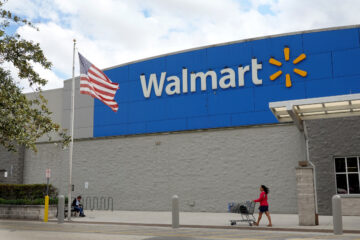After years of stable inflation, rates skyrocketed as the U.S. economy adjusted to post-COVID norms and supply chain bottlenecks. The years that followed saw notable price increases in consumer essentials — particularly groceries, housing, clothing, and energy.
As Americans grappled with this new normal, the cost of living became a central talking point across the political spectrum.
💵💰Don’t miss the move: Subscribe to TheStreet’s free daily newsletter 💰💵
After the November election, the Trump administration began laying the groundwork for tariffs on key trading partners Canada and Mexico and enacted 10% to 25% tariffs on all imports in February. However, consumers and economists were surprised at the size and scope of the new U.S. tariff policy announced on April 2nd.
Though the administration has since paused the proposed trade policy for 90 days, a universal 10% tariff remains for all countries except China, which is subject to a staggering 124% tariff, as well as Canada and Mexico.
Still, consumers have already noticed a difference in prices after the tariffs were implemented in February, and many worry that mounting trade wars will further hurt their wallets.
Inflation may reignite because of the ongoing tariff war.
Getty Images
Prices are soaring from inflation and tariffs
Although inflation dropped to 2.4% last month— the lowest level seen since September — years of heightened rates have translated into noticeably higher prices. Many Americans note that the cost of living is unsustainable and have been awaiting policy change from the federal government.
The Trump administration initially imposed tariffs against virtually all U.S. trading partners in an effort to reduce the American trade deficit. Despite the recently announced 90-day tariff pause, imports from most countries are subject to a flat 10% tax rate.
The Yale Budget Lab estimates that Trump’s tariff policies could cost the average U.S. household an additional $2,000 per year in disposable income.
The tangible impacts of trade tensions have hit household budgets: nearly half of consumers (48%) have already noticed price increases due to tariffs since February, with groceries, gas, and clothing prices surging the most.
More tariffs news:
Major US automaker makes harsh decision in the wake of tariff tussleAnalysts see challenges for Apple over tariffsWalmart doubles down on harsh tactic to shrink threat of tariffs
Denish Shah, a Professor of Marketing at Georgia State University’s Robinson College of Business, weighs in on how consumers will adjust their behavior in the wake of widespread tariffs.
“There has never been so much experimentation of tariffs in the past nor this large of scope,” he said in a release to TheStreet. “Consequently, consumers are panicking under these unusually high conditions of uncertainty.”
“Consumers are likely to accelerate purchases of necessities (e.g., grocery) and high-ticket items (e.g., cars) in anticipation of price hikes.”
Consumers are stockpiling goods
Consumers are changing their consumption and spending habits to minimize the impact of the rising cost of goods.
Clarify Capital found that 49% of consumers are stockpiling goods to avoid future price increases, focusing on food (33%) and household essentials (29%).
Related: Trump tariff showdown could have huge impact on housing market
Shah notes that tariffs could have long-term economic ramifications and dampen consumer confidence.
“Consumers are also likely to be more price-sensitive and become more deal-prone,” he explained. “Basically, engage in any action with the overarching goal of saving money. In the long term, they may cut down on expenses, and therein lies the dangerous risk of recession.”
The heightened recession fears and rising prices could impact the relatively positive consumer spending levels over the past few months.
Related: Veteran fund manager unveils eye-popping S&P 500 forecast


